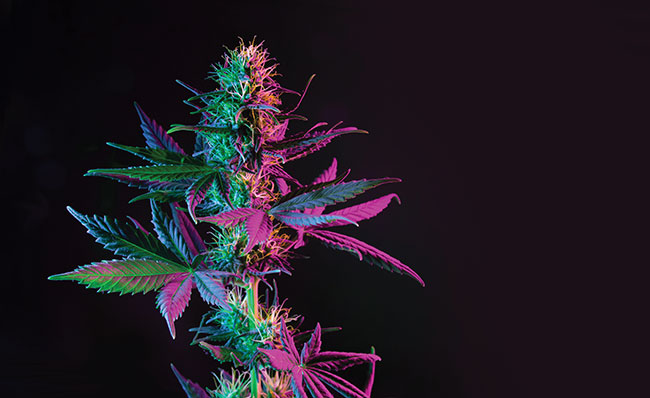
Features
Cultivation
Production
Crop Steering: Diving into the weeds of this game-changing plant management technique
August 15, 2022 By George Dickinson
 Productive cannabis plants are determined by the aptitude of the grower coupled with the appropriate technologies and techniques for mitigating stressors and maximizing both profits & yields. Photo: © Tsareva.pro / Adobe Stock
Productive cannabis plants are determined by the aptitude of the grower coupled with the appropriate technologies and techniques for mitigating stressors and maximizing both profits & yields. Photo: © Tsareva.pro / Adobe Stock This simple guide breaks down the basics for growers, teaching them to improve their grams per square foot, per year, using an approach to plant management called crop steering.
What is crop steering?
To live, plants need light, water, and a place to grow. When cultivating in an indoor or greenhouse setting, it’s the grower’s job to create a nurturing environment that is as close to nature as possible. This requires having to monitor and adjust environmental factors.
Crop steering is a practice in which cultivators manipulate light, climate, and irrigation in an indoor or greenhouse environment to encourage their plants to grow a certain way.
Long used in hydroponic vegetable production, crop steering is achieved, in part, by adjusting the frequency and level of irrigation specific to an environment, cultivar, and stage of plant growth. As a result, cultivators are able to steer their plants to grow bigger, produce better quality flowers, and improve their yield without losing production.
How does crop steering work?
The life cycle of the cannabis plant covers the following four phases:
- Propagation: when a new plant grows from a seed, cutting, or tissue culture.
- Vegetative: when plants produce leaves, stalks, and shoots.
- Generative: when plants produce flowers, fruits, and seeds.
- Harvest: when plants are gathered and dried before curing.
To achieve healthy cannabis plants in high yields, maintaining a proper balance between a plant’s vegetative and generative growth stages is vital. Growers can use crop steering to cue their plants to lean in one direction or the other.
During the vegetative stage, plants are focused on early root and plant development. Growers must maintain proper water content in the root zone without over or under saturating the substrate.
When steering the plants vegetatively, cultivators can promote rapid growth by eliminating stressors and allowing plants to absorb as much water as possible, while also ensuring they receive adequate nutrition. They achieve this balance by keeping electrical conductivity (EC) low and using every irrigation event (shot) as a signal that encourages the plant to take advantage of available resources.
During its generative stage the cannabis plant focuses on maximizing flower, resin, and flavour production. While growers apply more shots throughout the day in this phase, water content is typically maintained at lower levels than during the vegetative phase.
When steering generativity, growers apply targeted stressors — including increasing EC in the irrigation and the substrate to control water uptake — to promote more compact growth with a greater focus on reproduction.
Crop steering in motion
Crop steering empowers growers to control their environment, make more informed cultivation decisions, and achieve targeted results. To be successful, cultivators respond to generative and vegetative cues in the following key areas:
- Electrical Conductivity (EC): The amount of dissolved fertilizer in a solution as determined by the ease at which electricity can move through the water; EC is a direct measure of the amount of water that roots can access for transpiration and growth.
- Drybacks: The difference in volumetric water content (VWC) from the last irrigation event of a given day (max saturation) to the first irrigation event of the following day (lowest VWC level).
- Field capacity: The point after/during irrigation at which a substrate can no longer hold any more water.
- Leachate: The solution that is not absorbed by the medium during an irrigation event once it has reached its maximum potential saturation; AKA runoff.
- Shot size: The volume applied during an irrigation event or shot — usually expressed in total volume (mL) or as a percentage of the total media volume.
- Volumetric Water Content (VWC): The volume of water per volume of substrate, expressed as a percentage (%).
- Water Content (WC): The volume of nutrient solution (water + nutrients) in the substrate.
Crop steering allows growers to have control over their plants.
Utilizing a cannabis production platform with sensors that see inside substrate and around plants, plus a software platform that tracks and monitors every stage, cultivators can get all the insights they need to be able to steer their plants successfully. With today’s technology, and the right historical data, growers can increase their yields by at least 20 percent, with some reaching well over 50.
George Dickinson is the founder of CannaPro and the co-founder of Growhaus Supply. He has been in the greenhouse industry for three decades and helps cannabis companies become more efficient while improving their crop performance.
Print this page